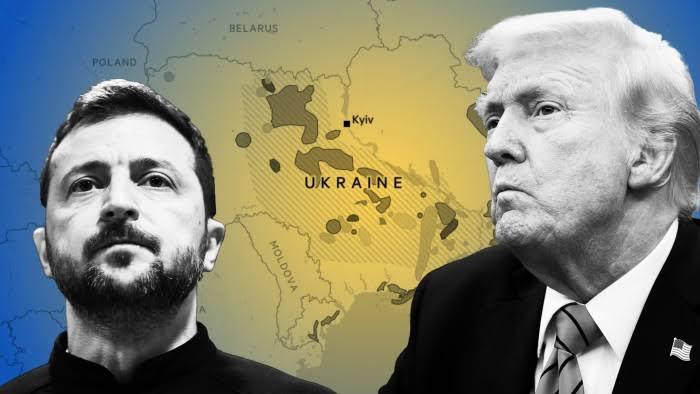
What to Expect from Trump’s Tariff Threats: Global Trade at a Crossroads
As Donald Trump begins his second term as President of the United States, renewed attention centres on his economic agenda, particularly his reliance on tariffs as a core trade policy tool. Known for his “America First” approach, Trump aims to shield U.S. industries and workers by targeting countries like China, Mexico, and Canada with tariffs on imports. This strategy, while not new, could significantly impact the global economy, international relations, and domestic industries.
The Return of Tariffs: A Central Economic Pillar
Trump’s renewed emphasis on tariffs builds on his first term, where he used them to address perceived trade injustices and reduce the U.S. trade deficit. His focus remains on China, frequently accusing Beijing of manipulating its currency, engaging in intellectual property theft, and flooding global markets with subsidised goods. Tariffs, he argues, are essential for levelling the playing field and restoring manufacturing jobs to the U.S.
Other targets include Canada and Mexico. Trump has criticised Canada for its agricultural policies and Mexico for its reliance on low-cost labour. The European Union (EU) also faces scrutiny for trade practices in sectors such as automobiles and agriculture.
Economic Implications for the United States
While tariffs are intended to bolster domestic industries, their broader effects remain contested. Trump’s previous tariff policies offer a mixed record:
● Boosting Domestic Production: Tariffs on steel and aluminium prompted some firms to relocate production to the U.S.
● Trade Negotiation Leverage: Tariffs on Chinese goods secured the 2020 Phase One trade deal, mandating China to purchase more U.S. agricultural products.
● Higher Costs for Consumers and Businesses: Tariffs inflated prices on imported goods, impacting items like electronics and household products.
● Supply Chain Disruptions: Many industries faced increased input costs and delays due to their reliance on global supply chains.
● Retaliation from Trade Partners: Nations like China, Canada, and the EU imposed counter-tariffs, adversely affecting American farmers and manufacturers.
Given these outcomes, Trump’s renewed strategy is likely to face resistance from businesses, economists, and policymakers concerned about its long-term ramifications.
Global Trade and International Response
Tariffs targeting Canada and Mexico risk undermining the United States-Mexico-Canada Agreement (USMCA). Cross-border industries such as automotive manufacturing and agriculture could suffer, prompting countermeasures from both nations. For example, in response to past U.S. tariffs, Canada imposed duties on U.S. aluminium, while Mexico targeted American agricultural exports.
As the world’s second-largest economy, China remains a focal point of U.S. tariffs. While these measures may challenge its economic practices, China has mitigated their impact by diversifying trade partnerships in regions such as Southeast Asia and Africa. Despite domestic challenges, including slowing economic growth, Beijing’s strategic initiatives, such as the Belt and Road Initiative, continue to strengthen its global influence.
Trump’s tariff threats against the EU could strain transatlantic relations. For instance, proposed duties on German automobiles and French agricultural products risk sparking retaliatory actions, deepening economic and political rifts.
Countries like Vietnam, India, and Brazil, which rely heavily on U.S. markets, may face disruptions to export flows. Such impacts could slow their economic growth and reduce foreign investment, highlighting the interconnected nature of global trade.
Strategic Considerations for Allies and Institutions
Trump’s tariff strategy challenges traditional global trade norms. Critics argue that unilateral tariffs undermine multilateral frameworks like the World Trade Organization (WTO), potentially encouraging protectionist trends worldwide. For U.S. allies, mitigating the effects of these policies requires diversifying trade partnerships, negotiating new agreements, and leveraging regional blocs.
Domestic Political Dynamics
Domestically, tariffs remain polarising. Trump’s base views them as essential to protecting American jobs, while critics argue they act as a hidden tax on consumers. Key constituencies, including farmers and manufacturers, could become vocal opponents if they experience adverse effects. Additionally, bipartisan concerns in Congress about the broader consequences of protectionism may hinder Trump’s ambitions.
The Path Forward
Trump’s tariff policies underscore a pivotal moment for global trade. While aimed at addressing trade imbalances and protecting U.S. industries, their success hinges on effective implementation and collaboration with allies. For the international community, this era of uncertainty necessitates resilience, innovation, and strategic cooperation to navigate the shifting trade landscape.
Conclusion
Trump’s renewed focus on tariffs reflects a bold but contentious approach to trade. While his policies aim to prioritise American industries, their global implications are profound, potentially reshaping economic dynamics and altering international relations. As countries adapt to these changes, the coming years will reveal whether Trump’s strategy fosters sustainable growth or exacerbates existing challenges in an interconnected world.
Dr Brian O. Reuben is the Executive Chairman of The Sixteenth Council.



